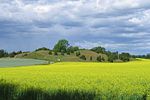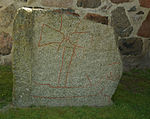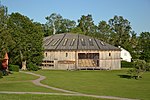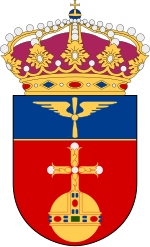Fjuckby
Pages with Swedish IPAPopulated places in Uppsala CountyPopulated places in Uppsala MunicipalityRunestones in Uppland

Fjuckby (Swedish pronunciation: [ˈfjɵ̌kːbʏ]) is a village in Uppsala Municipality, Uppsala County, Sweden, located about 15 km (9.3 km) north of the central city Uppsala along European route E4. The village has a population of 65 people (as of 2000) within an area of 18 hectares (44.5 acres). Known as a site for runestones, the village's name has generated worldwide interest in the village.
Excerpt from the Wikipedia article Fjuckby (License: CC BY-SA 3.0, Authors, Images).Fjuckby
C 698, Uppsala kommun
Geographical coordinates (GPS) Address Nearby Places Show on map
Geographical coordinates (GPS)
| Latitude | Longitude |
|---|---|
| N 59.966666666667 ° | E 17.6 ° |
Address
C 698
743 74 Uppsala kommun
Sweden
Open on Google Maps







